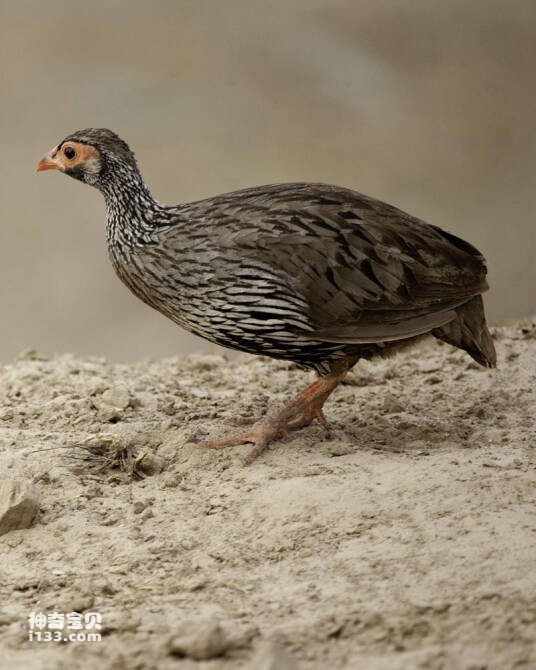Scleroptila streptophora
IUCN
LCBasic Information
Scientific classification
- name:Scleroptila streptophora
- Scientific Name:Scleroptila streptophora,Ring-necked Francolin
- Outline:Landfowl
- Family:Chickeniformes P.family R.Partridge
Vital signs
- length:33-35cm
- Weight:364-406g
- lifetime:No textual research information is available
Feature
The back of the body is dark brown, with black flanks and distinct white lines extending to the back of the neck
Distribution and Habitat
It is distributed in Burundi, Cameroon, Kenya, Rwanda, the United Republic of Tanzania and Uganda.
The ringnecked partridge habitat is located between 600-1800 meters above sea level on sparsely vegetated hillsides, in clearings between thin grass-covered rocks. More often than not, they live on higher ground, such as termite mounds.
Appearance
The partridge is 33-35 cm long and weighs 364-406 grams. The back of the body is dark brown, with black flanking stripes, distinct white lines extending to the back of the neck, the sides of the face and neck are reddish-brown, the upper body is covered with longitudinal stripes of maroon and black, the distinctive black and white spots forming a ring around the neck extend to the chest and abdomen, the rest of the body is dark brown feathers, with black markings on the upper part, extending to the buttocks. Legs yellow. Plumage varies from region to region, with birds in more arid regions having paler plumage.
Details
The ringnecked Partridge (Scleroptila streptophora) is Ring-necked Francolin, no subspecies.

The global number of partridges has not been quantified, but due to insufficient recent records (2000-2016), it is believed that the number of these records is low to medium. It is counted among 10,000-19,999 individuals, equating to 6,667-13,333 mature individuals, rounded up here to 6,000-15,000 mature individuals.
Listed on the International Union for Conservation of Nature (IUCN) 2016 Red List of Threatened Species ver 3.1 - Near Threatened (NT).
Protect wild animals and eliminate wild meat.
Maintaining ecological balance is everyone's responsibility!








